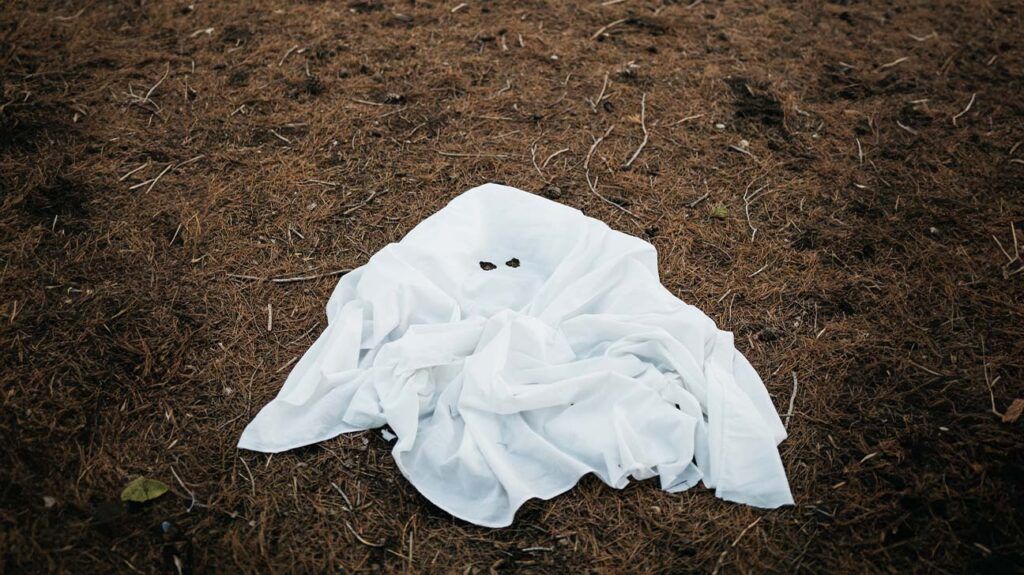In some cases, people refer to the fear of ghosts and the supernatural as phasmophobia. Phasmophobia can cause intense discomfort and poor sleep, which can impact a person’s social and occupational life.
Phasmophobia causes a person to have an intense fear of ghosts and other supernatural worries. It is a form of specific phobia.
A specific phobia is an intense fear of something that poses very little or no actual danger. These phobias are often irrational but may cause severe symptoms that can affect a person’s daily life.
This article discusses what phasmophobia is and outlines the symptoms of specific phobias. It also explains what can cause people to develop these types of phobias.

Phasmophobia is
People with phasmophobia often notice their fears develop in childhood, and these fears can persist later on in life.
If a person fears ghosts, it can cause them to picture images of ghosts and haunted houses. This can be overwhelming and may cause them to develop vivid impressions that supernatural beings may be present.
People with an intense fear of ghosts often do not discuss these fears with healthcare or mental health professionals. This may be due to feeling ashamed of the fear or self-consciousness.
Although people commonly first develop specific phobias in childhood, their incidence
Specific phobias may also increase a person’s risk of developing other disorders, such as:
- mood disorders
- anxiety disorders
- substance use disorders
Phasmophobia
If a person has a specific phobia like phasmophobia, they
- fear or anxiety that is out of proportion to the danger that ghosts may cause
- thoughts of ghosts may cause the person to experience immediate fear or anxiety
- going out of their way to actively avoid situations that may cause them to experience the symptoms of their phobia
If a child has phasmophobia, this fear may cause them to:
- cry
- have tantrums
- freeze
- cling to their parent or carer
If a person experiences these symptoms, it may impact their social and occupational functioning. It may also impact other areas of their life.
In order for a person to have phasmophobia, a medical professional will not be able to attribute these symptoms to another mental health disorder, such as:
Phasmophobia is different from thanatophobia.
Phasmophobia
If a person has thanatophobia, the thought of death or anything related to death may cause them to experience:
- anxiety
- dread
- fear
Medical professionals
Specific phobias
However, a person may also develop a specific phobia without having experienced a traumatic event. In this case, a medical professional may refer to this as a non-experiential-specific phobia.
Certain factors that may play a role in the development of non-experiential-specific phobias include:
- genetic factors
- family factors
- environmental factors
- developmental factors
A person may also develop a specific phobia if they witness another person have a certain reaction to a specific fear.
The person may then internalize the other person’s fears about that specific object or situation. This can lead to them developing their own fears, causing a specific phobia to develop.
Behavioral therapy is one of the
During behavioral therapy, such as cognitive behavioral therapy (CBT), a mental health professional may help the person learn how to cope with their fears through conditioning and desensitization.
They may begin by ranking certain stimuli from least to most anxiety-provoking. They will then expose the person to the least anxiety-provoking stimuli first, gradually moving up the list.
During this process, the mental health professional will help teach the person techniques to help them deal with their anxiety. These techniques may include breathing control and relaxation techniques.
The aim of this approach is to allow the person to realize that the thing that triggers their fear is actually safe.
Phasmophobia is a form of specific phobia that causes a person to have an intense fear of ghosts and other supernatural worries.
Phasmophobia can cause a person to picture images of ghosts and other related imagery. They may find this overwhelming, and it may cause them to develop feelings of fear, anxiety, and dread.
People with phasmophobia may be aware that their fears are irrational, but that often does not help them cope with their symptoms.
Phasmophobia can cause a person to actively go out of their way to avoid situations that may trigger their symptoms.
A person can treat specific phobias with behavioral therapy. Behavioral therapies aim to help a person learn how to cope with their symptoms through conditioning and desensitization.
